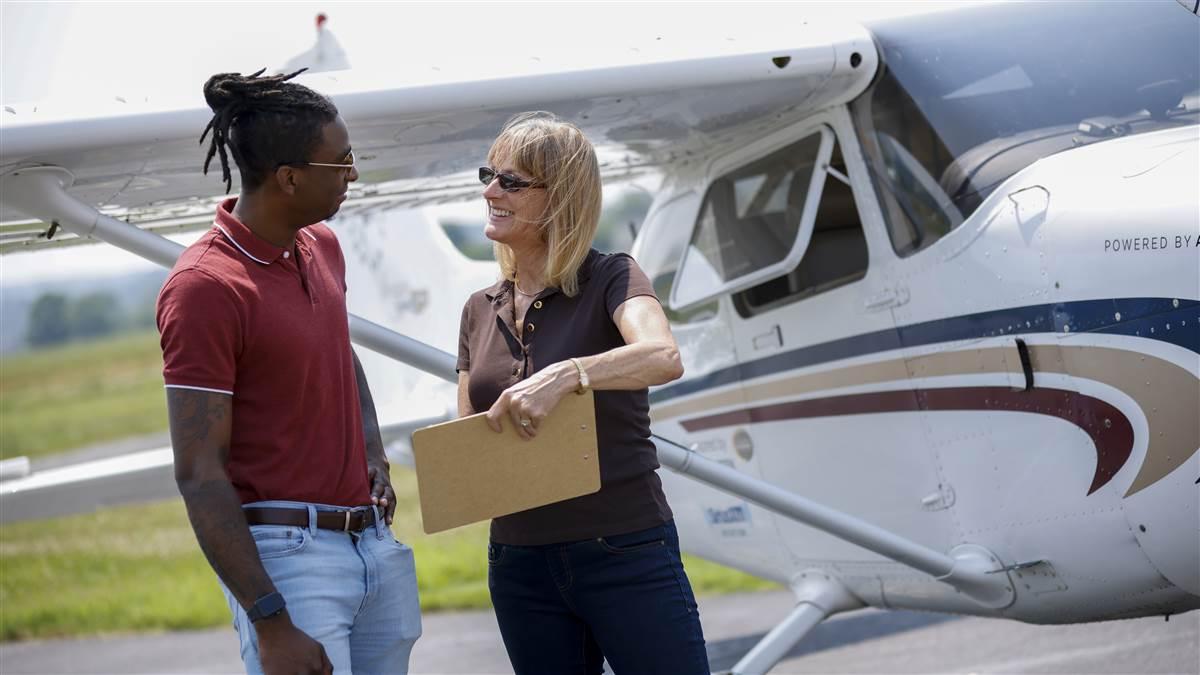Primacy
For greater enjoyment and safety, learn it right—from the start
By John W. Olcott
Learning to fly is an adventure. It’s a journey with spectacular vistas, demanding challenges, and great opportunities for self-expression and fulfillment. Flying is fun. Flying is useful. Flying adds a new dimension to life for those who seek to master the technology.

But it also exposes the unprepared or poorly prepared to significant risk. For the student pilot, the venture begins. For the certificated aviator, the venture is ongoing. How can the student make the most of his or her primary training, thus laying the foundation for a safe and rewarding aviation experience?
Start with a good teacher
Studies have shown that what a student learns first often creates a strong, almost unshakable impression. What the student learns first is most easily remembered. What is learned first is most likely to be recalled during emergencies or times of stress. Experts in learning theory call the importance of learning a procedure or technique correctly the first time the law of primacy.
Regarding flying, the beginning student’s memory of how to fly a maneuver or plan a flight is analogous to a pristine field that has not been disturbed by any structures or obstacles. Before beginning lessons, student pilots have no pre-established ideas about proper flying procedures. They lack the vocabulary of flight—stalls mean engine stoppage to non-aviators, for example, and automobiles are not controlled in the same way airplanes are controlled. Think of the flight instructor laying down on the student’s pristine, uncluttered memory a road—a road of knowledge, so to speak—leading to the correct way to fly the task.
If the initial teaching is incorrect or lacks relevance—the road is constructed incorrectly—the CFI must correct the situation by removing the initial road and replacing it with a new path to achieve the objective of the task to be learned. While a new road may be properly implemented on the second try, the scars of the original road to knowledge remain. The pristine mind, just like the pristine field, retains the remnants of the removed road, thereby cluttering the student’s learning process.
The message is clear—the CFI must teach the task right, from the start. An effective teacher understands the law of primacy. A good teacher respects and uses the law of primacy.
Laws of learning
Student pilots learn best from CFIs who understand the laws of learning and teach following those principles. The aviation community uses a lot of “memory joggers.” For the CFI as well as the student, the memory jogger for laws of learning is REEPIR, which stands for Readiness, Effect, Exercise, Primacy, Intensity, and Recency.
Readiness. A good teacher prepares students to learn—physiologically and mentally. That means the student is well hydrated (the cabin of a training aircraft on a hot summer day is dehydrating), properly nourished (no salty cheese crackers from the airport vending machine for lunch), well rested, and well prepared for the task to be learned through reading and ground instruction prior to the flight. A good teacher also instills confidence in his or her students that the flight will be safe and productive, thus the student will be undistracted and ready to learn.
Effect. A good teacher presents a clear relationship between the steps to be learned and the task to be accomplished. The student understands that following the steps taught by the CFI results in the task being completed correctly. Information is presented in a classroom prior to the flight and then demonstrated in flight, all in a positive environment—no putdowns or harsh criticisms by the CFI. Students learn best when the teacher reinforces the positive.
Exercise. A good instructor demonstrates in flight what he or she taught on the ground, referencing the appropriate visual, auditory, and other cues the student should use when they drill the maneuver. Instructor-supervised drills emphasize the positive and encourages the student to achieve proficiency.
Intensity. A good instructor relates a maneuver to be learned to a real-world situation. The CFI uses a technique known as scenario-based training by painting a verbal picture of the task as it unfolded in an actual event. Such specificity adds intensity to the lesson, thereby increasing the likelihood of the student retaining what was taught.
Recency. A good teacher appreciates the need to refresh students frequently on information taught. Experts in learning theory know that pilots recall what was recently learned, but recent information often fades quickly unless reinforced. Hence the need for recurrent training. Furthermore, experience shows that the Law of Primacy trumps the Law of Recency.
Students should seek instructors who are good teachers. Ask a question of current students before you commit to a flight school, and talk with potential CFIs to know who will be shaping your future as an aviator.
John W. Olcott is an airline transport pilot, CFII, and remote pilot, as well as former president of the National Business Aviation Association.
